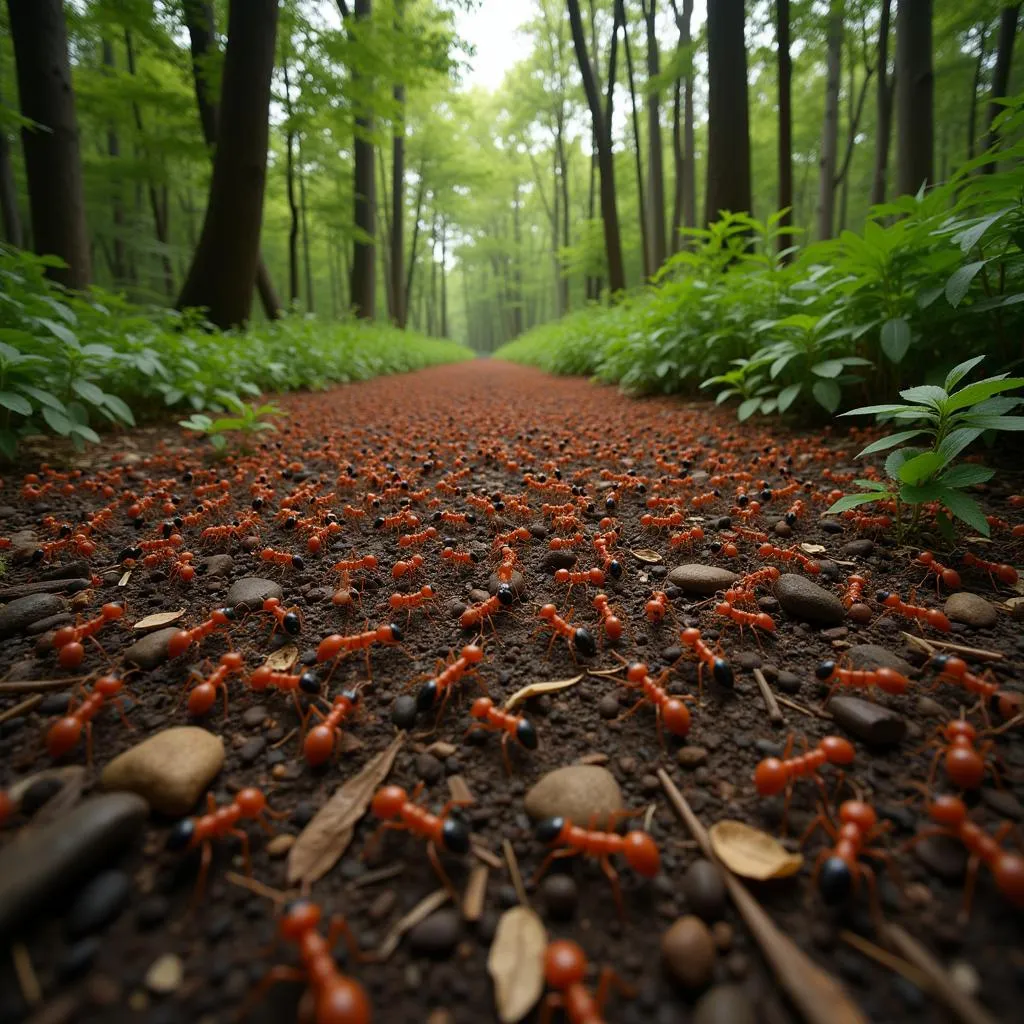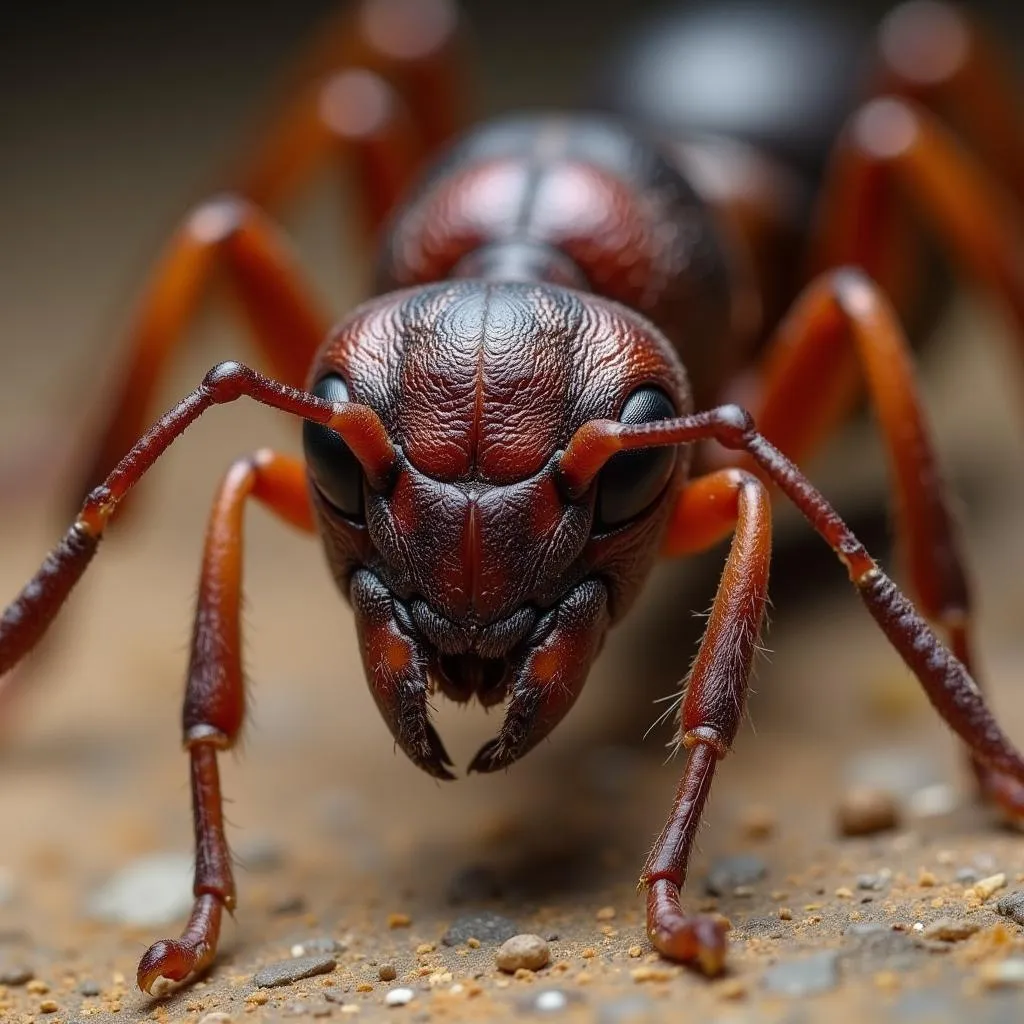Africa, a continent teeming with diverse wildlife, is also home to a variety of ant species. While most are harmless, some pose significant threats to humans and animals alike. Understanding these “African Dangerous Ant” species, their behaviors, and how to stay safe is crucial for anyone venturing into the African wilderness or living in areas where these insects thrive.
 Driver Ant Colony on the Move
Driver Ant Colony on the Move
The Fearsome Reputation of Driver Ants
One of the most notorious African ant species is the Driver Ant (Dorylus sp.). These formidable insects are infamous for their massive, nomadic colonies, which can contain up to 22 million individuals. Unlike many ant species that establish permanent nests, Driver Ants are constantly on the move, relentlessly hunting for prey. Their powerful mandibles, capable of delivering a painful bite, are used to overwhelm and dismember their victims, which can include insects, spiders, scorpions, and even small vertebrates.
 Driver Ant Close-up: Powerful Mandibles
Driver Ant Close-up: Powerful Mandibles
The Army Ant: A Force to be Reckoned With
Driver Ants are often referred to as “Army Ants” due to their highly organized raiding behavior. Millions of ants form a formidable front, sweeping across the forest floor in a seemingly unstoppable wave. This “raid front” can be up to 20 meters wide and is used to flush out prey from their hiding places.
“Driver Ants are the epitome of collective power in the insect world,” explains Dr. Maya Kombe, an entomologist specializing in African ant species. “Their ability to coordinate attacks and overwhelm prey much larger than themselves is a testament to their sophisticated communication and social structure.”
More Than Just a Bite: The Venom of African Ants
While the bite of a Driver Ant is certainly painful, it’s rarely life-threatening to humans. However, other African ant species pack a more potent punch. The Matabele Ant (Megaponera analis), for instance, possesses venom that can cause intense pain and localized swelling. These ants are known for their coordinated raids on termite colonies and their ability to subdue prey many times their size.
The Stinging Sensation of Fire Ants
Another group of ants to be wary of in Africa are Fire Ants (Solenopsis sp.). These small but aggressive ants are named for their fiery sting, which injects a venomous alkaloid that causes a burning sensation. While not typically fatal, Fire Ant stings can be extremely painful and may cause allergic reactions in some individuals.
 African Fire Ant: Small but Mighty
African Fire Ant: Small but Mighty
Living with African Ants: Precautions and Safety Tips
While encountering dangerous ants might seem like a cause for alarm, a little knowledge and preparation can go a long way in preventing unpleasant encounters. Here are some essential tips to keep in mind:
- Awareness is Key: When venturing into ant-prone areas, be vigilant and pay attention to your surroundings. Look for signs of ant activity, such as trails or nests.
- Proper Clothing: Wear long pants tucked into socks and closed-toe shoes to minimize exposed skin. Consider using insect repellent, especially on your shoes and lower legs.
- Avoid Disturbances: Never disturb an ant nest or colony. If you encounter a raiding column, move away calmly and avoid direct contact.
- First Aid: If bitten or stung, wash the affected area with soap and water. Apply a cold compress to reduce swelling. Over-the-counter pain relievers can help manage discomfort.
- Seek Medical Attention: In case of severe reactions, such as difficulty breathing, dizziness, or widespread swelling, seek medical attention immediately.
Conclusion: Respect, Not Fear
While the African wilderness is home to some potentially dangerous ant species, it’s important to remember that these creatures play a vital role in the ecosystem. With a little respect and understanding, it’s entirely possible to coexist peacefully with these fascinating insects. By taking necessary precautions and educating ourselves about their behavior, we can appreciate the wonders of the natural world while ensuring our safety.
Leave a Reply